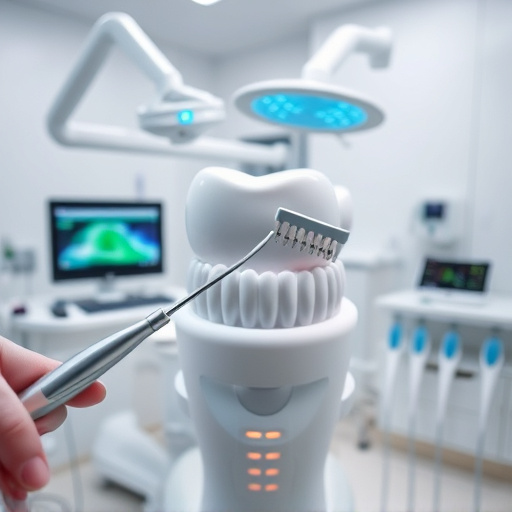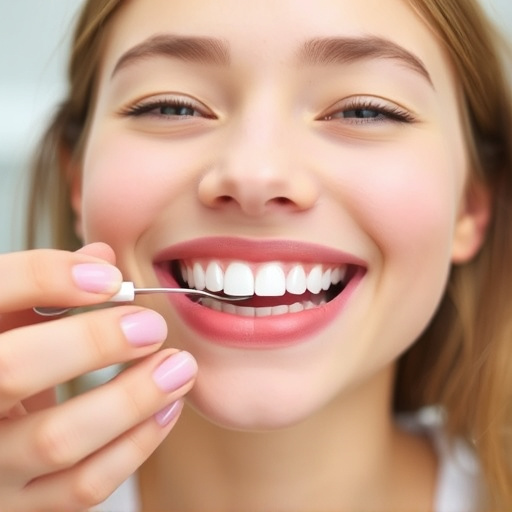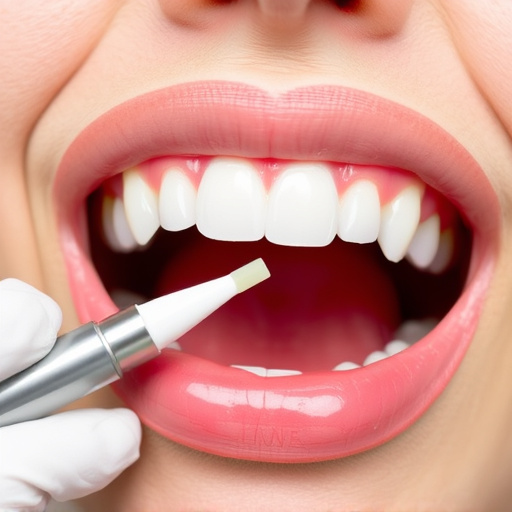Oral Health Assessment: Early Detection Saves Lives
An oral health assessment is a detailed exam by dentists using specialized tools and techniques to d…….
Oral health assessment (OHA) is a critical process that involves the systematic evaluation of an individual’s oral cavity, surrounding structures, and overall dental health. It serves as a cornerstone in dentistry, enabling healthcare professionals to detect, diagnose, and manage various oral conditions. This article aims to provide an in-depth exploration of OHA, covering its historical roots, global impact, economic implications, technological innovations, regulatory frameworks, challenges, case studies, and future prospects. By delving into these aspects, we will uncover the multifaceted nature of oral health assessment and its significance in maintaining and improving global oral wellness.
Oral health assessment is a multi-faceted process that encompasses several key elements:
Visual Examination: Dentists or dental hygienists use specialized tools to inspect the teeth, gums, tongue, lips, and oral mucosa for any signs of disease, injury, or abnormality. This visual assessment includes checking for tooth decay, gum inflammation, oral ulcers, and any structural anomalies.
Palpation: This involves gently touching or pressing specific areas of the mouth to assess pain, tenderness, or swelling. Dentists may use their fingers or specialized instruments to palpate the gums, teeth, and temporomandibular joints.
X-ray Imaging: Radiographic examinations provide detailed images of the oral cavity, enabling dentists to identify caries not visible during a visual exam, evaluate tooth and root positions, and detect bone loss or cysts. Common X-ray types include periapical (focusing on individual teeth) and bitewing (showing multiple teeth).
Oral Cancer Screening: OHA includes a thorough examination for any signs of oral cancer, such as abnormal growths, ulcers, or lesions in the mouth, throat, or lips. This crucial step involves visual inspection, palpation, and sometimes specialized tests like oral brush biopsies.
Assessment of Oral Function: Evaluating an individual’s ability to chew, speak, and swallow is integral to OHA. Dentists may inquire about chewing efficiency, speech clarity, and any difficulties in swallowing.
The practice of oral health assessment has evolved over centuries, reflecting advancements in dental science and technology. In ancient times, early dentists primarily relied on visual inspection and manual probing for diagnosis. However, the formalization of OHA as a standard procedure began to take shape during the 20th century with the development of X-ray technology, which revolutionized diagnostic capabilities.
Today, OHA is an integral part of preventive dentistry, enabling early detection of oral diseases and promoting better patient outcomes. It plays a vital role in public health efforts by reducing the global burden of dental decay and oral cancer. By integrating OHA into routine dental care, professionals can provide personalized treatment plans, improve patient comfort, and enhance overall oral health literacy.
Oral health assessment has gained worldwide recognition as a critical component of comprehensive healthcare. The World Health Organization (WHO) has emphasized the importance of oral health in general well-being, leading to increased global awareness and efforts to improve access to OHA services. This international focus has resulted in various initiatives and guidelines for standardizing OHA practices across different countries.
The implementation and emphasis on OHA vary across regions, influenced by cultural, economic, and healthcare system factors:
North America: Countries like the United States and Canada have well-established OHA protocols, with regular dental check-ups being a common practice. Advanced technologies, such as digital X-rays and intraoral cameras, are widely adopted to enhance diagnostic accuracy.
Europe: European countries have robust oral health systems, and OHA is generally integrated into routine healthcare. The European Union’s oral health strategies emphasize preventive care, early detection, and access to dental services for all citizens.
Asia: Some Asian nations, like Japan and Singapore, have excellent oral health outcomes, partly attributed to strong OHA practices. Cultural factors play a role in promoting oral hygiene, while technological advancements are driving innovations in OHA.
Low-and Middle-Income Countries: Access to OHA services remains a challenge in many parts of Africa, Asia, and South America due to limited healthcare resources and infrastructure. Global health organizations are working to improve this by providing guidelines, training, and accessible technologies for OHA in these regions.
The oral health assessment market is a significant segment within the broader dental industry. Key players include dental equipment manufacturers, software developers, and service providers offering specialized OHA tools and solutions. The global market size was valued at USD 7.5 billion in 2021, with a projected CAGR of 6.5% from 2022 to 2030 (Source: Grand View Research). This growth is driven by increasing awareness, rising dental tourism, and the demand for advanced diagnostic technologies.
Investment in OHA-related technologies and infrastructure has been steadily rising, particularly in regions with expanding healthcare systems. Governments and private investors are allocating funds to:
Develop and implement digital oral health assessment tools, such as mobile applications for remote consultations and monitoring.
Enhance dental education programs to include advanced OHA techniques and technologies.
Establish specialized dental care facilities equipped with state-of-the-art diagnostic equipment.
Efficient OHA practices contribute to economic savings in several ways:
Preventive Care: Early detection of oral health issues through OHA can prevent more costly treatments later, reducing healthcare expenses.
Reduced Absenteeism: By addressing oral pain and discomfort promptly, OHA can minimize work or school absenteeism due to dental problems.
Improved Quality of Life: Good oral health is linked to overall well-being, leading to increased productivity and a higher quality of life for individuals.
The digital revolution has brought about significant changes to oral health assessment:
Digital X-rays: These advanced systems offer faster image acquisition, improved resolution, and reduced radiation exposure compared to traditional film X-rays. They enable dentists to access and share images digitally, facilitating remote consultations.
Intraoral Cameras: Small, handheld cameras allow dental professionals to capture detailed images of the oral cavity, providing a visual aid for diagnosis and patient education.
Teledentistry: Telehealth platforms enable OHA services to be provided remotely, especially in underserved areas. This includes real-time video consultations, image sharing, and remote monitoring.
Artificial Intelligence (AI): AI algorithms are being developed to analyze dental images, assist in diagnosis, and provide personalized treatment recommendations. These systems can detect caries, oral cancer, and other conditions with a high degree of accuracy.
The future of OHA technology looks promising, with ongoing developments expected to revolutionize the field:
3D Imaging: Advanced 3D dental scanners will offer even more detailed oral assessments, enabling better planning for complex treatments.
Wearable Sensors: Smart devices that monitor oral health parameters, such as pH levels and chewing efficiency, could provide continuous data for proactive care.
Genetic Testing: Integrating genetic information into OHA may enable personalized risk assessments and tailored prevention strategies.
Robotic Dentistry: Robotic systems could assist in surgical procedures, enhancing precision and patient comfort.
Several international organizations have developed guidelines and frameworks to standardize oral health assessment practices:
WHO’s Oral Health Program: The WHO provides global oral health guidelines, promotes preventive strategies, and supports capacity building in low-resource settings.
FDI (Federal Dental Association): This international dental association offers evidence-based clinical guidelines for various dental procedures, including OHA.
National Dental Associations: Many countries have their dental associations that set local standards and regulations for OHA, ensuring quality care.
Oral health assessment is subject to various legal considerations across different jurisdictions:
Consent and Privacy: Patients’ rights to consent and privacy during OHA procedures are protected by healthcare regulations. Informed consent ensures patients understand the process and its risks/benefits.
Data Protection: Dental practices must adhere to data privacy laws when handling patient oral health data, including electronic health records (EHRs).
Licensing and Professional Standards: Dental professionals performing OHA must comply with licensing requirements and maintain high standards of practice as outlined by their regulatory bodies.
Despite its importance, oral health assessment faces several challenges:
Access Inequalities: Disparities in access to dental care, particularly in rural or underserved communities, hinder effective OHA implementation. Telehealth solutions can help bridge this gap but require adequate infrastructure and resources.
Cost Considerations: Advanced OHA technologies and tools can be expensive, creating financial barriers for both patients and healthcare providers, especially in low-income regions.
Resistance to Change: In some cases, resistance from dental professionals or patients may impede the adoption of new OHA techniques or technologies, requiring education and training efforts.
Criticisms of OHA primarily revolve around issues such as overdiagnosis, unnecessary treatment recommendations, and patient anxiety:
Overdiagnosis: With advancements in technology, there is a risk of identifying conditions that may not require immediate intervention, leading to overtreatment. Balancing diagnostic accuracy with clinical judgment is essential to address this concern.
Patient Anxiety: Some individuals experience dental anxiety or phobias, which can make OHA challenging. Using relaxation techniques, sedative options, and empathetic communication can help alleviate anxiety during the assessment process.
To overcome these challenges, several strategies can be implemented:
Public Health Campaigns: Raise awareness about oral health, emphasizing the importance of regular OHA and preventive care.
Government Initiatives: Provide financial support and incentives to improve access to OHA services in underserved areas, including subsidies for advanced technologies.
Continuous Education: Offer dental professionals ongoing training on the latest OHA techniques, evidence-based practices, and ethical considerations.
Patient Engagement: Encourage patient participation in their oral health care by providing educational resources and promoting open communication between dentist and patient.
The CBOHP is a successful example of community engagement in oral health assessment. This program, implemented in rural areas of India, involved local health workers conducting door-to-door oral health screenings, promoting oral hygiene practices, and providing basic dental care. The initiative improved oral health literacy, reduced caries prevalence, and increased access to OHA services in underserved communities.
In remote Australian Aboriginal communities, a digital OHA program was launched to address the unique challenges of accessing dental care. This project utilized intraoral cameras and video conferencing to enable dentists to remotely examine patients’ oral health. The program successfully provided OHA services to individuals who otherwise would have faced significant travel barriers to reach dental facilities.
Many U.S. schools incorporate oral health assessment as part of their student wellness programs. This initiative includes visual and tactile examinations by dental hygienists, along with educational workshops on proper oral hygiene. The program has been effective in improving oral health outcomes among school-age children and adolescents, reducing tooth decay rates.
The future of oral health assessment is poised for further innovation and integration:
Personalized Medicine: With advancements in genomics and AI, OHA may become more personalized, tailored to individual patient needs and risk factors.
Integration with Telehealth: Teledental services are expected to grow, providing convenient access to OHA and remote consultations, especially for rural and underserved populations.
Wearable Technology: Smartwear and oral health monitoring devices will play a bigger role in continuous oral health assessment, enabling proactive care.
Several sectors offer promising opportunities for OHA growth:
Aging Population: As global populations age, there is an increasing demand for advanced dental care, including OHA services tailored to older adults’ unique needs.
Oral Cancer Screening: With rising awareness and improved screening technologies, oral cancer detection rates are expected to rise, leading to better patient outcomes.
Global Health Initiatives: International collaborations and organizations will continue to drive efforts to improve access to OHA in low-resource settings, aligning with global health goals.
Oral health assessment is a critical component of comprehensive healthcare, playing a pivotal role in maintaining and improving oral wellness globally. From its historical roots to the latest technological advancements, OHA has evolved to become a sophisticated process that empowers dental professionals to provide personalized care. Addressing economic considerations, integrating policy frameworks, and overcoming challenges will be essential to ensure equitable access to high-quality OHA services worldwide. As technology continues to advance and global health initiatives gain momentum, the future of oral health assessment promises exciting possibilities for enhancing oral health outcomes at a population level.
Q: How often should someone undergo oral health assessment?
A: The frequency of OHA depends on individual risk factors, age, overall health, and dental history. As a general guideline, adults should have a comprehensive OHA every 6 months to a year. However, individuals with specific conditions or high-risk factors may require more frequent assessments.
Q: Are there any at-home tests for oral cancer that I can use?
A: While there are no widely accepted at-home oral cancer test kits, several smartphone applications and devices claim to aid in early detection. These tools typically provide visual guidance for self-examination and may offer basic risk assessments. However, they should not replace professional OHA, as they have limited sensitivity and specificity for diagnosing oral cancer.
Q: Can AI truly assist in oral health assessment?
A: Yes, AI has the potential to revolutionize OHA by analyzing dental images, identifying abnormalities, and providing diagnostic support. AI algorithms can detect caries, periodontal disease, and even oral cancer with impressive accuracy. However, they should be used as aids for dentists rather than stand-alone diagnostic tools, as clinical judgment remains essential.
Q: How does teledentistry benefit patients in rural areas?
A: Teledentistry overcomes geographical barriers by enabling remote consultations between patients in rural areas and dental professionals located elsewhere. Through video conferencing, real-time image sharing, and digital record keeping, teledentistry provides access to specialized OHA services that might otherwise be unavailable locally. This approach can improve oral health outcomes and reduce healthcare disparities.

An oral health assessment is a detailed exam by dentists using specialized tools and techniques to d…….

Oral health assessment is a vital part of teen development, offering comprehensive examinations beyo…….

An oral health assessment is a thorough dental examination encompassing visual inspections, tool che…….